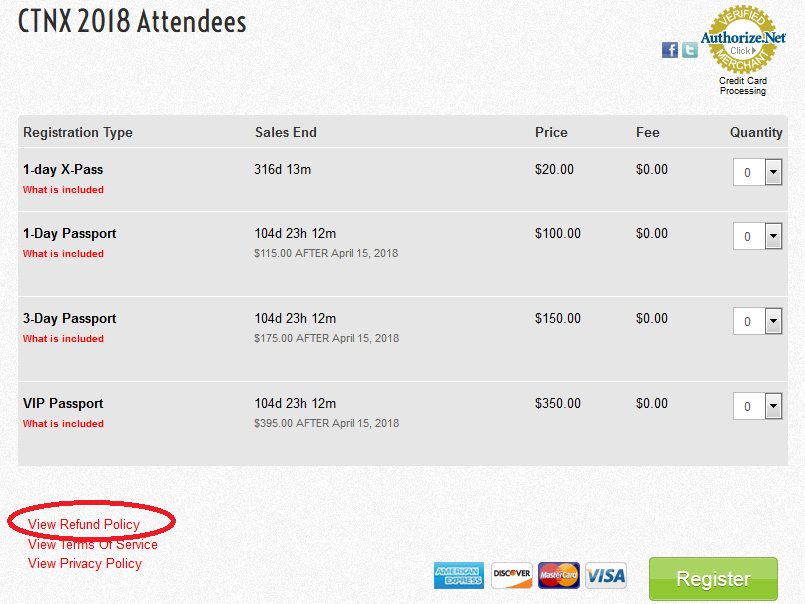What Should You Do If a Customer Requests a Refund?
By
|
Last updated on
Refunds are a reality for online businesses. They’re frustrating, but completely normal. Try as hard as you like, you won’t please everyone.
Obviously you want to avoid giving out refunds as much as possible. You should do this by delivering a product or service that people are happy to buy, and refining your marketing messaging to reach the right people.
Nevertheless, some customers will want their money back. How you respond to those requests has the potential to define the growth of your business.
You’ve probably been on the other side of a difficult refund. How did that make you feel? It likely made you distrust the business. You probably told a few people about your experience. But a successful refund is a relief. Even if the product isn’t right, you can at least respect the company.
If you ignore refund requests or enforce an unreasonable “no refunds” policy, you’ll do irrevocable damage to your reputation and business. But if you refund everyone with the slightest complaint, you’ll invite people to take advantage of you.
So how do you respond to refund requests? By following these steps.
Step 1: Handle the Matter Quickly
When a customer asks for a refund, your first step is to act quickly.
The customer is already upset about the situation. You don’t want them to stew in their anger for too long, otherwise they’ll start talking to people about their unpleasant experience. 95% of people who have a bad experience tell someone about it.
If you aren’t sure how you’ll proceed right away, at the very least you should acknowledge the customer’s request for a refund. Tell them you’re working on a solution and will get back to them as quickly as you can. This will placate them for a while.
Step 2: Investigate the Facts Thoroughly
Your next step is to put on your detective hat and gather some information. Look through your records and data to make sure the customer’s story adds up.
For instance, you’ll want to verify the customer’s purchase date. You wouldn’t want to refund a purchase made three years ago.
If you have to gather information from the customer, avoid being argumentative or suspicious. Ask probing questions that don’t insinuate the customer is a liar.
- Bad question: “Since you didn’t finish the course, how do you know you aren’t satisfied?”
- Good question: “I see you didn’t make it to the end of the course. What made you stop?”
Stick to open-ended questions. If you only ask yes/no questions, the customer will tell you whatever they think you want to hear to get to their refund fastest.
Keep your eyes open for potential credit card fraud. Some customers will use returns as a way to keep their product/service and the money, but this is technically fraud.
Step 3: Consult Your Refund Policy
Every online business should have a refund policy somewhere on their website. If you have your customers sign contracts, it should be included there too.
Ideally, this policy should cover every eventuality. Customers are less likely to request a refund if they know their problem falls outside of your refund policy. Similarly, a refund policy assures customers they have a course of action if they’re unsatisfied.
If you aren’t sure how to respond to the customer’s specific situation, review your policy to see if you already have guiding language. It’s important to follow your policy because those are the conditions under which the customer made their purchase.
Step 4: Look for a Non-Refund Remedy
In a lot of cases, you may be able to solve the customer’s problem in a different way that doesn’t involve refunding their money. This way you can make the customer happy without losing anything yourself.
This is especially useful if the customer’s problem is a mistake you made. For instance, if they received a damaged product in the mail, you might simply send them a new one. If the customer was unhappy with a service you provided, you might offer comped services.
This method technically increases your costs, but it’s better than losing the sale altogether.
If the customer doesn’t like your proposed solution, it’s tempting to ask them “What can I do to make this right?” This question can be problematic. Some customers will offer a reasonable alternative, but others will make outrageous demands you can’t accommodate.
Asking what they’d like and then denying their request will further degrade their experience. If they don’t like your proposed solution, simply refund their money.
Step 5: Make a Reasonable Decision
If the customer’s complaint falls within your refund policy, you have to refund their money. Don’t try to wiggle your way out.
If their complaint falls outside of your policy, don’t be ashamed to refuse the refund. You aren’t responsible for refunding services they consumed years ago.
That said, don’t be afraid to bend the rules. Treat your refunds on a case-by-case basis. If you refuse a refund because the request is one day late, the customer will understand, but they won’t feel good about the experience.
It’s generally a bad idea to propose a complex remedy that forces the customer to calculate what they’re actually getting back. If they don’t understand your solution, they’ll assume you’re just trying to wiggle out of the refund.
For instance, this is a bad solution: “We’ll refund 45% of what you paid, give you free access to our basic courses, a 20% coupon for our premium courses, and give you 10 consulting hours that you can use for yourself or gift to a friend.” Skip the complexity and just refund the money.
Step 6: Follow Up With Your Decision and Clear Steps
Once you’ve decided how you’ll respond to the customer’s refund request, your next step is to reply to the customer with a clear decision.
Call or send an email that outlines your resolution. If you won’t refund their money, explain why in clear, non-judgemental language. Keep your emotions out of it.
If you will refund their money, apologize briefly for their unhappiness and tell them when and how they’ll receive the refund. Send the money back right away.
Whatever you do, do not charge a refund fee. Customers find that infuriating.
Step 7: Ask for Some Feedback
If there is no tension between you and the customer, you’ll find it useful to ask for some feedback about your products and services. At this point the customer will have what they want (the refund), so they should be willing to help.
For instance, if a customer complains that your landing page over-hyped your service, you could ask them to point out the specific elements (copy or images) that gave the wrong impression. Use this information to optimize your website and landing pages so you attract the right kind of conversions.
If you think the customer was especially displeased with their experience, skip this step. You’ll just annoy the customer asking for more of their time.
Step 8: Review Your Refund Policy
You might not do this after every refund (especially if you have a high volume of sales and, inevitably, many refund requests), but you should review your policy any time a refund situation wasn’t cut-and-dry.
The purpose of a refund policy is to protect you and the customer. It should be designed in a way that ensures both parties have a positive experience, and neither party takes advantage of the other.
After refunding a customer’s money, evaluate whether the refund policy provides a reasonable solution to that situation. If it didn’t, ask yourself how you should modify the refund policy to create a better outcome in the future.
Keep Your Cool
We’ve explained what you should do if a customer requests a refund, but here’s our last piece of advice. It’s arguably the most important.
Don’t let your emotions get the best of you.
It’s easy to become defensive, annoyed, or hurt when someone asks for their money back. None of these feelings will help you resolve the situation and satisfy the customer. Make sure your refund decisions are based on fact. Re-read your email correspondence with your customers to filter out any poor language.
Processing refunds is a necessary part of running an online business. By following this advice, you’ll protect your reputation and grow a satisfied customer base.
Featured image: GotCredit / Flickr



